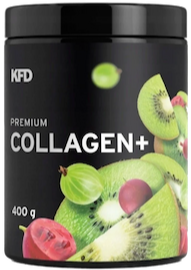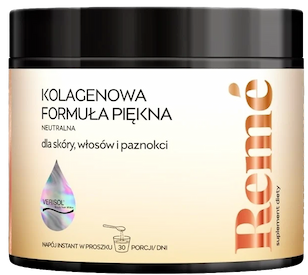Best gelatin for joints and knees with a joint jello recipe
Does gelatine for joints work? Or is it better to choose collagen?


Learn more about our editorial process
.

Learn more about our editorial process
.

Learn more about our editorial process
.

Learn more about our editorial process
.
Why you can trust us
Articles on Natu.Care are written based on scientific research, data from government websites and other reliable sources. The texts are written in cooperation with doctors, nutritionists and other health and beauty experts. Articles are reviewed before publication and during significant updates.
.Learn more about our editorial process
.Information about advertisements
Content on Natu.Care may contain links to products from the sale of which we may receive a commission. When creating content, we adhere to high editorial standards and take care to be objective about the products discussed. The presence of affiliate links is not dictated by our partners, and we select the products we review ourselves completely independently.
.Learn more about our terms and Conditions
.Home remedies for a variety of ailments tempt you with their simplicity, sometimes price tag and promised results. I'm sure you've heard that gelatine has a cluster of fans who regularly cut into jelly legs.... alternating with jelly beans. And they drink gelatine - for healthy joints.
Does this make sense? My MSc in Pharmacy and I have looked into a biochemistry textbook and the results of several scientific studies. You're about to breathe a sigh of relief because you don't need to get ready for a gelatine mustache from drinking and you don't need 101 recipes for jellies.
We've got you covered.
We have something better for your joints.
From this article you will learn:
- Whether drinking gelatine helps your joints.
- What scientific research suggests about the effects of gelatin on joints.
- What can help improve joint health.
- Why you should choose collagen for joints over gelatin.
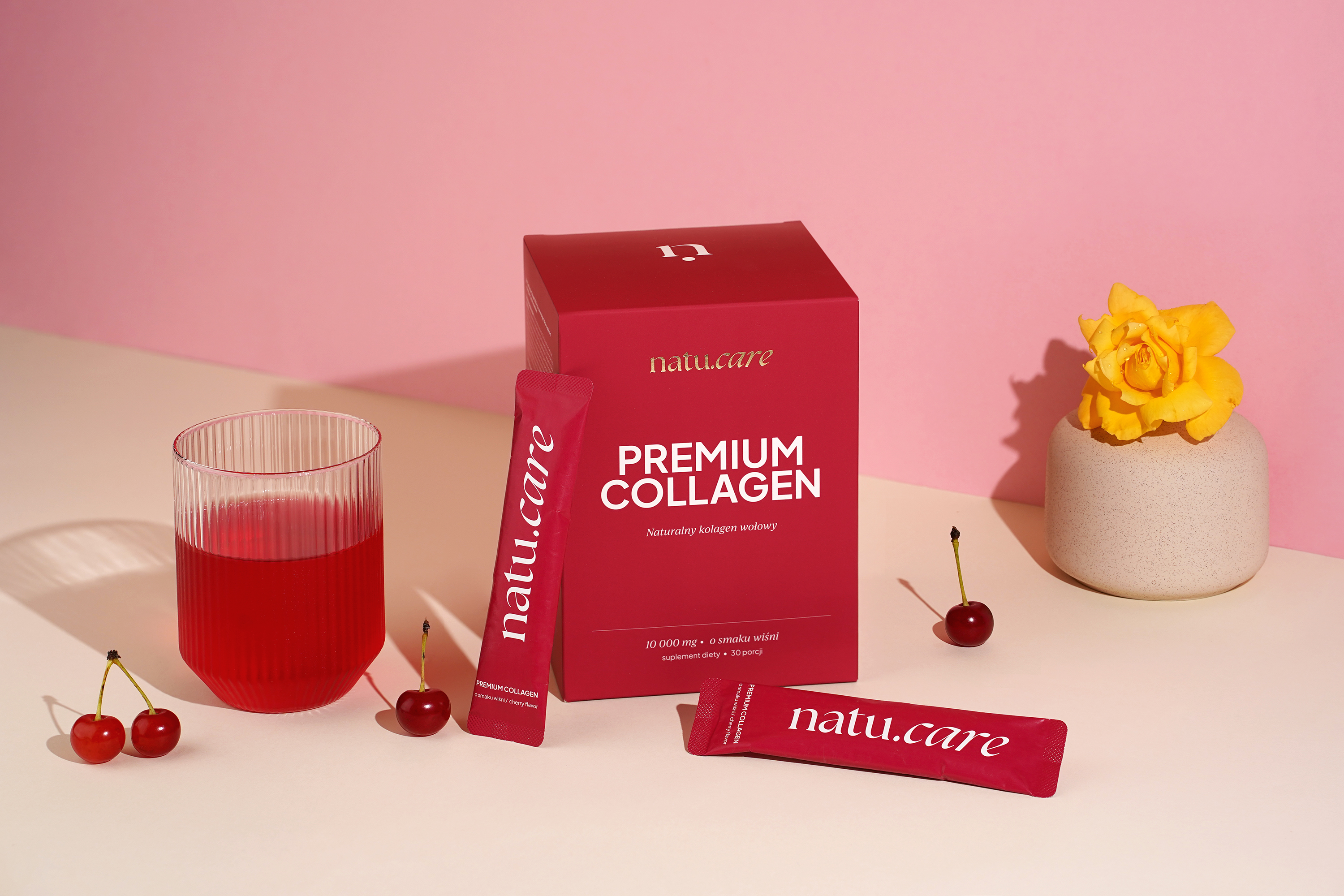
Sprawdź, jak może on zadbać o zdrowie Twoich stawów i urodę! Kolagen Premium (10 000 mg) wiśnia -15% z kodem BLOG15
Natu.Care Kolagen Premium 10000 mg, wiśnia
Natu.Care Kolagen Premium dla zdrowia stawów, skóry, paznokci i włosów. Wołowy kolagen w optymalnej dawce 10 000 mg. Przebadany przez niezależne laboratorium.
Sprawdź cenę
Ten kolagen dobrze się rozpuszcza, super smakuje – jak taki soczek wiśniowy. Moje włosy przestały wypadać, są gęstsze i zdrowsze a cera promienna.@Dominika P.
See also:
- Collagen for joints
- Fish collagen
- Most powerful collagen
- Best absorbed collagen
- Collagen for athletes
- Collagen for runners
Natu.Care Collagen Premium 5000 mg, mango-maracuja
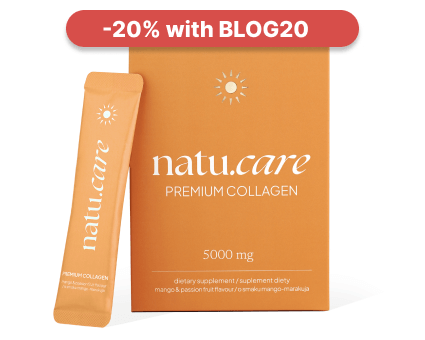
- Collagen content: 5000 mg marine collagen hydrolysate
- .
- Additional active ingredients: vitamin C, low molecular weight hyaluronic acid (and L-theanine and coenzyme Q10 in cocoa flavoured collagen or vitamin A and vitamin E in mango–passion fruit flavoured collagen)
- .
- Form: powder sachets
- .
- Dose: 1 sachet per day
- .
- Sufficient for: 30 days
- .
Product description
Fish collagen from the Natu.Care brand in a dose of 5000 mg. The formula contains a sufficient portion of the active substance to positively affect your joints, musculoskeletal system and immunity.
Take care of your tendons, joint cartilage, ligaments, muscles and even bones by supplying them with the building blocks to function properly. Move without bólu and provide the necessary support for any physical activity.
And as a „gratis” to regular supplementation, you will also receive firm skinóhand, healthy and shiny hair and strong nails.
Natu.Care Premium Collagen is available in two flavours – Cacao Bloom and Rise&Shine. Both formulas are based on the following active ingredients: marine collagen hydrolysate, wild roseóbud extract and hyaluronic acid.
Additionally, Cacao Bloom contains natural L-theanine, coenzyme Q10 and defatted Dutch cacao. Rise&Shine instead contains vitamin E and vitamin A.
These are the best collagens in the world.
These best fish collagens on the market also rós taste – Cacao Bloom is a treat for chocolate lovers. Rise&Shine will appeal to those whoóenjoy the refreshing taste of mangoófruit and passion fruit.
Pros and cons
Fish collagen from the Natu.Care brand in a dose of 5000 mg. The formula contains a sufficient portion of the active substance to positively affect your joints, musculoskeletal system and immunity.
Take care of your tendons, joint cartilage, ligaments, muscles and even bones by supplying them with the building blocks to function properly. Move without bólu and provide the necessary support for any physical activity.
And as a „gratis” to regular supplementation, you will also receive firm skinóhand, healthy and shiny hair and strong nails.
Natu.Care Premium Collagen is available in two flavours – Cacao Bloom and Rise&Shine. Both formulas are based on the following active ingredients: marine collagen hydrolysate, wild roseóbud extract and hyaluronic acid.
Additionally, Cacao Bloom contains natural L-theanine, coenzyme Q10 and defatted Dutch cacao. Rise&Shine instead contains vitamin E and vitamin A.
These are the best collagens in the world.
These best fish collagens on the market also rós taste – Cacao Bloom is a treat for chocolate lovers. Rise&Shine will appeal to those whoóenjoy the refreshing taste of mangoófruit and passion fruit.
Additional information
Fish collagen from the Natu.Care brand in a dose of 5000 mg. The formula contains a sufficient portion of the active substance to positively affect your joints, musculoskeletal system and immunity.
Take care of your tendons, joint cartilage, ligaments, muscles and even bones by supplying them with the building blocks to function properly. Move without bólu and provide the necessary support for any physical activity.
And as a „gratis” to regular supplementation, you will also receive firm skinóhand, healthy and shiny hair and strong nails.
Natu.Care Premium Collagen is available in two flavours – Cacao Bloom and Rise&Shine. Both formulas are based on the following active ingredients: marine collagen hydrolysate, wild roseóbud extract and hyaluronic acid.
Additionally, Cacao Bloom contains natural L-theanine, coenzyme Q10 and defatted Dutch cacao. Rise&Shine instead contains vitamin E and vitamin A.
These are the best collagens in the world.
These best fish collagens on the market also rós taste – Cacao Bloom is a treat for chocolate lovers. Rise&Shine will appeal to those whoóenjoy the refreshing taste of mangoófruit and passion fruit.
User review
Fish collagen from the Natu.Care brand in a dose of 5000 mg. The formula contains a sufficient portion of the active substance to positively affect your joints, musculoskeletal system and immunity.
Take care of your tendons, joint cartilage, ligaments, muscles and even bones by supplying them with the building blocks to function properly. Move without bólu and provide the necessary support for any physical activity.
And as a „gratis” to regular supplementation, you will also receive firm skinóhand, healthy and shiny hair and strong nails.
Natu.Care Premium Collagen is available in two flavours – Cacao Bloom and Rise&Shine. Both formulas are based on the following active ingredients: marine collagen hydrolysate, wild roseóbud extract and hyaluronic acid.
Additionally, Cacao Bloom contains natural L-theanine, coenzyme Q10 and defatted Dutch cacao. Rise&Shine instead contains vitamin E and vitamin A.
These are the best collagens in the world.
These best fish collagens on the market also rós taste – Cacao Bloom is a treat for chocolate lovers. Rise&Shine will appeal to those whoóenjoy the refreshing taste of mangoófruit and passion fruit.
Natu.Care Collagen Premium 10000 mg, cherry
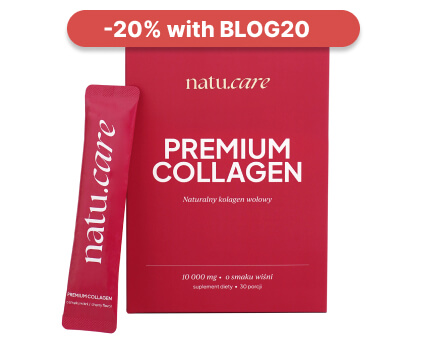
- Collagen content: 10,000 mg of hydrolyzed bovine collagen
- Additional active ingredients: vitamin C, low molecular weight hyaluronic acid, glucosamine, chondroitin, extract of Indian frankincense resin (boswellia serrata)
- Form: powder sachets for drinking
- Serving: 1 sachet per day
- Lasts for: 30 days
Product description
One of the strongest collagens on the market, providing as much as 10,000 mg per daily serving. This product can effectively support the condition of joints, skin, hair, and nails.
With this supplement, you will support your skeletal and joint system as well as your beauty, helping you visually halt the aging process and feel rejuvenated!
Pros and cons
Pros:
- The daily portion of collagen is very large – as much as 10,000 mg.
- Proven collagen formula – COLLinstant, whose effectiveness has been confirmed in clinical studies.
- Effective dose of hyaluronic acid, which additionally moisturizes the skin and positively affects joint health.
- Vitamin C supports the body's natural collagen production.
- Glucosamine is a fundamental building block of compounds found in joint cartilage and a component of collagen that gives elasticity to connective tissue in tendons.
- Chondroitin is a natural component found in the human body, mainly in cartilage. This large molecule (mucopolysaccharide) has the ability to absorb water, which helps maintain the elasticity and resilience of cartilage.
- Frankincense resin extract supports blood circulation and joint mobility and reduces their stiffness. It may help alleviate inflammatory conditions.
- The composition has been tested by the independent and accredited J.S. Hamilton laboratory.
Cons:
- None.
Additional information
Users praise Natu.Care Collagen Premium for the easy dissolving of the powder.
ALLDEYNN Collarose Fish
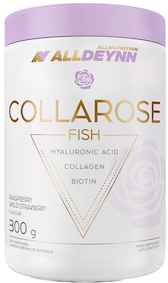
- Collagen content: 5000 mg hydrolysate fish collagen VERISOL F® .
- Additional active ingredients: vitamin C, hyaluronic acid, biotin
- Form: powder to dissolve in water .
- Dose: one scoop (6 g) of powder daily .
- Sufficient for: 50 days .
Product description
Atlantic cod collagen VERISOL F® contained in the formula are easily absorbed collagen peptides of fish origin. Regular supplementation can firm your skinóhand and slow down the ageing process. Your nails will become stronger and stop breaking. The addition of biotin will improve the condition of your hairów. The collagen portion is high enough to also have a good effect on your joints, muscles and bones.
Pros and cons
Atlantic cod collagen VERISOL F® contained in the formula are easily absorbed collagen peptides of fish origin. Regular supplementation can firm your skinóhand and slow down the ageing process. Your nails will become stronger and stop breaking. The addition of biotin will improve the condition of your hairów. The collagen portion is high enough to also have a good effect on your joints, muscles and bones.
Additional information
Atlantic cod collagen VERISOL F® contained in the formula are easily absorbed collagen peptides of fish origin. Regular supplementation can firm your skinóhand and slow down the ageing process. Your nails will become stronger and stop breaking. The addition of biotin will improve the condition of your hairów. The collagen portion is high enough to also have a good effect on your joints, muscles and bones.
Expert and user opinion
Atlantic cod collagen VERISOL F® contained in the formula are easily absorbed collagen peptides of fish origin. Regular supplementation can firm your skinóhand and slow down the ageing process. Your nails will become stronger and stop breaking. The addition of biotin will improve the condition of your hairów. The collagen portion is high enough to also have a good effect on your joints, muscles and bones.
DuoLife Collagen fish collagen 2500 mg
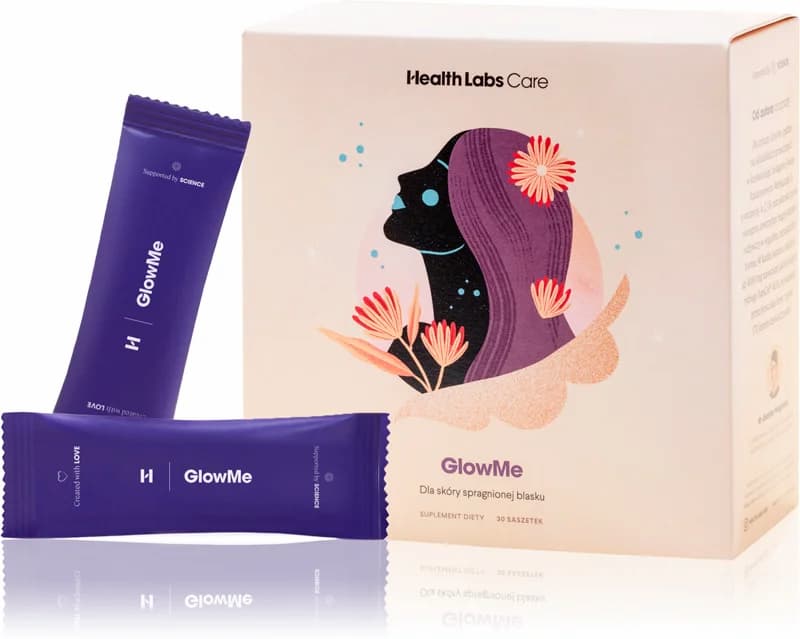
- Collagen content: 2500 mg collagen
- Additional active ingredients: vitamin C, silicon, glucosamine, hyaluronic acid, nettle and bamboo extracts
- Form: liquid to drink .
- Dose:25 ml .
- Sufficient for: 30 days .
Product description
100% natural collagen liquid without unnecessary ingredientsós. The composition of ingredientsós improves the appearance and condition of skinóry, hairów, nails. DuoLife is a good choiceór if you notice the first signs of skinóry ageing or want to stop this process. A tasty liquid, convenient to use.
Pros and cons
100% natural collagen liquid without unnecessary ingredientsós. The composition of ingredientsós improves the appearance and condition of skinóry, hairów, nails. DuoLife is a good choiceór if you notice the first signs of skinóry ageing or want to stop this process. A tasty liquid, convenient to use.
Additional information
100% natural collagen liquid without unnecessary ingredientsós. The composition of ingredientsós improves the appearance and condition of skinóry, hairów, nails. DuoLife is a good choiceór if you notice the first signs of skinóry ageing or want to stop this process. A tasty liquid, convenient to use.
User review
100% natural collagen liquid without unnecessary ingredientsós. The composition of ingredientsós improves the appearance and condition of skinóry, hairów, nails. DuoLife is a good choiceór if you notice the first signs of skinóry ageing or want to stop this process. A tasty liquid, convenient to use.
Pharmovit liquid collagen 10000 mg
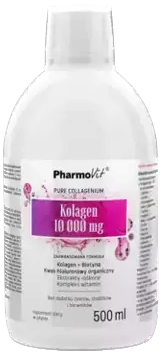
- Collagen content: 10000 mg hydrolysed bovine collagen types I and III .
- Additional active ingredients: hyaluronic acid, natural plant extracts, vitamin C, B vitamins, zinc, vitamin D
- Form: vials .
- Dose: 25 ml .
- Sufficient for: 20 days .
Product description
A solid daily dose of collagen for jointómuscle and bone health and beauty. The duo of collagen and vitamin C has a positive effect on each other, so that „the protein of youth” is better absorbed and more efficiently produced in the body.
Pros and cons
A solid daily dose of collagen for jointómuscle and bone health and beauty. The duo of collagen and vitamin C has a positive effect on each other, so that „the protein of youth” is better absorbed and more efficiently produced in the body.
Additional information
A solid daily dose of collagen for jointómuscle and bone health and beauty. The duo of collagen and vitamin C has a positive effect on each other, so that „the protein of youth” is better absorbed and more efficiently produced in the body.
KFD Premium Collagen+
Product description
High dose of collagen and a real bomb of vitamins C and D and organic sulphur. With this preparation the effects will come immediately. You will improve the firmness of your skin and reduce wrinkles. Your hair and nails will be strong and shiny.
A generous dose of collagen will improve the mobility of your jointsós, benefit your bone system and muscles. Do you do sports and need a product thatós able to keep up with your needs? This product will do the trick.
Pros and cons
High dose of collagen and a real bomb of vitamins C and D and organic sulphur. With this preparation the effects will come immediately. You will improve the firmness of your skin and reduce wrinkles. Your hair and nails will be strong and shiny.
A generous dose of collagen will improve the mobility of your jointsós, benefit your bone system and muscles. Do you do sports and need a product thatós able to keep up with your needs? This product will do the trick.
Additional information
High dose of collagen and a real bomb of vitamins C and D and organic sulphur. With this preparation the effects will come immediately. You will improve the firmness of your skin and reduce wrinkles. Your hair and nails will be strong and shiny.
A generous dose of collagen will improve the mobility of your jointsós, benefit your bone system and muscles. Do you do sports and need a product thatós able to keep up with your needs? This product will do the trick.
Expert opinion
High dose of collagen and a real bomb of vitamins C and D and organic sulphur. With this preparation the effects will come immediately. You will improve the firmness of your skin and reduce wrinkles. Your hair and nails will be strong and shiny.
A generous dose of collagen will improve the mobility of your jointsós, benefit your bone system and muscles. Do you do sports and need a product thatós able to keep up with your needs? This product will do the trick.
Product description
The dietary supplement from Remé contains beef collagen in a patented formula and vitamin C, whichóra aids its absorption. The formula comes in three flavours: neutral, orange-maracuja and strawberry-pomegranate. The formula can effectively support and improve the condition of the skinóry, hairóry and nails.
Pros and cons
The dietary supplement from Remé contains beef collagen in a patented formula and vitamin C, whichóra aids its absorption. The formula comes in three flavours: neutral, orange-maracuja and strawberry-pomegranate. The formula can effectively support and improve the condition of the skinóry, hairóry and nails.
Additional information
The dietary supplement from Remé contains beef collagen in a patented formula and vitamin C, whichóra aids its absorption. The formula comes in three flavours: neutral, orange-maracuja and strawberry-pomegranate. The formula can effectively support and improve the condition of the skinóry, hairóry and nails.
The dietary supplement from Remé contains beef collagen in a patented formula and vitamin C, whichóra aids its absorption. The formula comes in three flavours: neutral, orange-maracuja and strawberry-pomegranate. The formula can effectively support and improve the condition of the skinóry, hairóry and nails.
What is gelatin?
Gelatin is a colourless, tasteless animal protein. It is extracted during cooking collagen taken from bones, tendons and skins from cattle, pigs or fish. It consists of 98-99% protein, with the remaining 1-2% being water and small amounts of vitamins and mineralsand.
Gelatin is used in food, pharmaceuticals, cosmetics, paper, photography, film production and to create adhesives and foams . Drinking gelatine is also a popular home remedy for improving skin, hair, nails and joints .
The benefits of consuming gelatine may be due to its unique amino acid profile, although it varies in the content of these compounds depending on the type of animal tissue used and the method of preparationand.
The most abundant amino acids in gelatine areand:
.
Gelatin, however, is an incomplete protein, as it does not contain all the essential amino acidsand.
Are collagen and gelatine the same thing?
.
No, collagen and gelatin are not the same thing, although they are closely related. Collagen is a protein that makes up about 30% of all protein in the body. It is found in connective tissue, skin, bones, muscles and the cornea of the eye. Gelatin, on the other hand, is the product formed when collagen is cookedand.
See also:
.
Gelatin versus gelatin hydrolysate
.Gelatin is a basic protein, used to form a gel or jelly e.g. in dishes. Gelatin hydrolysate is a more processed product with higher solubility and wider useand.
How does gelatine work for joints?
.
Gelatin works on joints mainly due to its amino acid content - glycine, proline and hydroxyproline. Together, these proteins contribute more than 50% of collagen, which benefits joint health, can rebuild cartilage tissue and reduce pain associated with joint diseaseand.
Systematic drinking or eating foods with gelatin can support connective tissue health and positively affect joint function, although this will not be as effective as collagen supplementation. Importantly, gelatin will not cure arthritis or arthritis in an advanced state.
Gelatin absorption
.
Gelatin is digested like any other protein, and the products of its metabolism are used by the body where it is needed, not where we would like it to go.
Gelatin is not a super-intelligent compound that selectively goes to the joints. Gelatin metabolites will go partly to the joints, partly to the bones or support regeneration of the skin, eyes, hair or immune system. Everyone will get what they need, provided you ensure an adequate supply.
Food gelatine has less absorption into the bloodstream than hydrolysed collagen. As a denatured form of collagen, it has good bioavailability, but must undergo further hydrolysis processes to break it down into smaller peptides, or even amino acids, that it will be able to absorb.
Fish hydrolysate has a particle size of about 4 kDa, while gelatine has a particle size of 15 000 Da and above, with aggregates of 200-300 kDa. Therefore, smaller collagen molecules will be better absorbed than larger ones from gelatine..
 .
.
Ilona Krzak Master of Pharmacy
.
How much collagen is in gelatin?
.
Master of Pharmacy explains:
Gelatin does not contain 'typical collagen' because it is not a single chemical compound, but a mixture of fractions made up entirely of amino acids linked by peptide bonds. These form polypeptides with a lower molecular weight than native collagen. By knowing the individual fractions, we can assess the initial content of the collagen from which the gelatine was made.
So all products containing gelatine, or hydrolysates, are only conventionally called collagen. They simply provide the 'bricks' for the construction of endogenous collagen.
Collagen is not a collagen product.
Scientific research
.
In many articles about gelatine for joints, you can read about the positive effects of this protein in test subjects. The authors often cite popular studies involving athletes from 2008 or patients with arthritis from 2012 .
Unfortunately, when you read into both studies, you find that hydrolysed collagen or hydrolysed chicken sternum cartilage extract was used - it wasn't the pure gelatine you have in your cupboard. These proteins in the study were low molecular weight, while regular gelatine has a high molecular weight.
The low molecular weight makes it easier for the peptides, or collagen proteins, to penetrate the intestinal barrier and 'push' into the bloodstream. Large, high-molecular-weight molecules have a significantly poorer bioavailability.
I mean: the effects of collagen hydrolysate on the musculoskeletal system were studied, not gelatine. No one drank food-grade gelatine, but specially prepared collagen.
It was not the collagen that was studied.
However, I was able to access two studies that looked at how drinking pure gelatine affects joint function.
Review of studies from 2012
.
Included eight research papers that compared the effects of hydrolysed collagen, gelatine or undenatured collagen on pain reduction in osteoarthritisand.
Gelatin was found to be superior to placebo, but it was concluded that there was insufficient evidence to recommend its use for the treatment of osteoarthritis pain.
If osteoarthritis is advanced, no dietary supplement or gelatine will cure the condition. The best thing is prevention - taking care with physical activity, postural hygiene, a nutritious diet and preventive examinations.
Prevention is best.
In cases of advanced osteoarthritis appropriate supplementation is advisable, but with the caveat that only in consultation with the treating physician and as a support to therapy - not the main treatment..
 .
.
Michal Bojemskiphysiotherapist
.
Study of 2016
.
A study involving eight men tested whether supplementation with gelatin (5 or 15 g) enriched with vitamin C (48 mg) before intermittent physical activity increased collagen production in the bodyand.
The subjects jumped on a skipping rope for six minutes each three times a day for three days. They had their blood drawn multiple times: before consuming the gelatine and vitamin C cocktail, 1 hour after consumption, and 4, 24, 48 and 72 hours after the first skipping.
Results.
The results showed that supplementation of the cocktail with 15g of gelatine was the most effective - it increased collagen synthesis by up to 153%. These data suggest that adding gelatine to an intermittent exercise programme improves the body's collagen production and may play a beneficial role in injury prevention.
The data also suggests that the addition of gelatine to an intermittent exercise programme improves collagen production in the body and may play a beneficial role in injury prevention.
Note, however, that this study is only on eight men and the conclusions do not mention joint pain reduction - but injury prevention.
How to make gelatine for joints at home?
.
There are two ways: you boil the bones around the clock or drink the 'ready-made' stuff.
Home-made gelatine from bones
.
Ingredients:
- about 1.5 kg of animal bones (beef ribs, chicken thighs) .
- water (enough to cover the bones) .
- optional: 1 tablespoon (18 grams) white salt, vegetables (carrots, onions - as desired) .
Making:
.
- Make the bones in a pot or slow cooker. If you are using salt, add it now. .
- Pour in enough water to just cover the contents. .
- Bring to the boil, then reduce the heat. .
- Cook on low for up to 48 hours (the longer it simmers, the more gelatine will be released). .
- Drain the liquid, then allow it to cool and solidify. .
Scrape the grease from the surface and discard it.
See also:
.
Gelatin drink
.
I have found several recipes with different proportions, but the most common is to use 3 teaspoons of gelatine and 100 ml of cold water. The liquid should be mixed well, set aside overnight and drunk on an empty stomach before breakfast. To make it easier to consume, you can add lemon juice, maple syrup, honey or juice.
How long can you drink gelatine for joints?
.
There is no clear indication as to how long you can drink gelatine for joints, although recommendations can be found from 14 days to 6 months. Some scientific studies also suggest that 10g of gelatine can be safely consumed for up to 24 weeksand.
Take gelatine prophylactically. And, above all, for pleasure if, like me, you love jellies or cold legs (necessarily with lemon).
Gelatin - side effects
.
Ingesting moderate amounts of dietary gelatine is safe in most people and does not cause side effects. However, allergic reactions or intolerance symptoms may occur in some people who are sensitive to gelatine ingredients:
- People with allergies may experience skin rash, hives, itching, swelling or difficulty breathing.
- People with allergies may experience skin rash, hives, itching, swelling or difficulty breathing.
- Gelatin intolerance manifests as bloating, abdominal pain, nausea or vomiting after eating products containing this protein.
- People with a gelatin intolerance may experience bloating, abdominal pain, nausea or vomiting after eating products containing this protein.
Excessive amounts of gelatin can cause nausea, a feeling of a full stomach, gastro-oesophageal refluxand.
Important
.Gelatin may slightly restrict the absorption of medications or nutrients, so a 2-hour interval between gelatin consumption and medications is recommended.
Contraindications to the use of gelatine
- .
Contraindications to taking gelatin include an allergy or intolerance to it and a tendency to form blood clots or varicose veinsand.
Gelatin may increase blood clotting..
 .
.
Ilona Krzak Master of Pharmacy
Remember mad cow disease?
.In the 1890s, after many cases of bovine spongiform encephalopathy (commonly known as 'mad cow disease') were publicised, there was growing public concern about the consumption of gelatineand. Beef gelatine was then withdrawn from the market in many countries, and most packs of gelatine-based jelly or gelatine itself are labelled as being of porcine origin.
What instead of gelatine for joints?
- .
Instead of gelatine for joints, it is worth supplementing with collagen, as good quality supplements contain more 'youth protein' than gelatine, have higher bioavailability, additional active ingredients to support function and... are tastier.
To support your joints, muscles and bones, provide your body with what it will actually use with the right portion and absorption. By choosing fish collagen with certification and laboratory testing (e.g. SeaGarden collagen), you know what you're providing your body with and in what quantity. And you'll still lap up the taste after drinking.
Also, a number of scientific studies have been published that suggest beneficial effects of fish collagen on the condition of skin, nails or joints with regular supplementationand.
- .
Remember prevention
.First and foremost prevent joint pain - make sure you are physically active, maintain an appropriate body weight to avoid overloading your joints, and eat a varied diet that provides vitamins, minerals and other important nutrients.
Fish collagen versus gelatine
- .
As much as some home remedies and tricks are cool (e.g. try gelatine on your hair, it's great for its appearance), sometimes it's worth looking into scientific studies and seeing in black and white what works and what doesn't. And what ... tastes good.
High.
High.
Dessert jellies are often high in sugar.
|
Property . |
Hydrolysed fish collagen . |
Food grade gelatin . |
||
|
Particle size . |
Low molecular weight, meaning that due to hydrolysis, collagen peptides overcome the intestinal barrier better and more of them are absorbed. |
High molecular weight, meaning it has lower bioavailability and is more difficult to penetrate the bloodstream. |
. | |
|
Bioavailability |
||||
| . |
High, thanks to the hydrolysis and structural similarity of fish collagen to that of humans. |
Medium, the processes involved in absorption occur with less efficiency than with collagen hydrolysate. |
||
|
Performance supported by scientific studies |
Yes: there have been a number of human, animal and in vitro studies that suggest a positive effect of collagen supplementation on beauty and health. |
The following is a summary of the research. |
Drinking dietary gelatine and its beneficial effects on health are not supported by scientific studies. |
|
|
Enjoyment of supplementation |
Collagen can be purchased in delicious flavours and added to a variety of meals: smoothies, smoothies, desserts, oatmeal. You can disguise collagen in powder, shots, liquids or capsules. . |
Not everyone will be comfortable drinking cold water with gelatine, and gelatinous dishes can be overcooked. |
. | |
|
Additional benefits of consuming |
Collagen dietary supplements often contain additional active ingredients that promote the absorption of collagen and complement its effects (e.g. vitamin C, hyaluronic acid). |
Some people feel satiety after eating gelatine, which can reduce snacking. |
. | |
|
Disadvantages |
Be aware of the quality of the dietary supplement - some manufacturers do not state the source of collagen, the molecular weight, and the formulations contain unnecessary flavourings, preservatives, colours. |
Dessert jellies often contain a lot of sugar. And the consumption of jellies, broths, broths can provide large amounts of fat, which negatively affects cholesterol levels. |
||
|
Costs |
Dietary supplements with collagen can be purchased from tens to hundreds of zlotys. |
Collagen. |
Count on the table to help you choose and provide yourself with the best collagen. Informed supplementation is very important so that you choose high quality sources of collagen and provide yourself with the best possible absorbable form so that it has a chance to work.
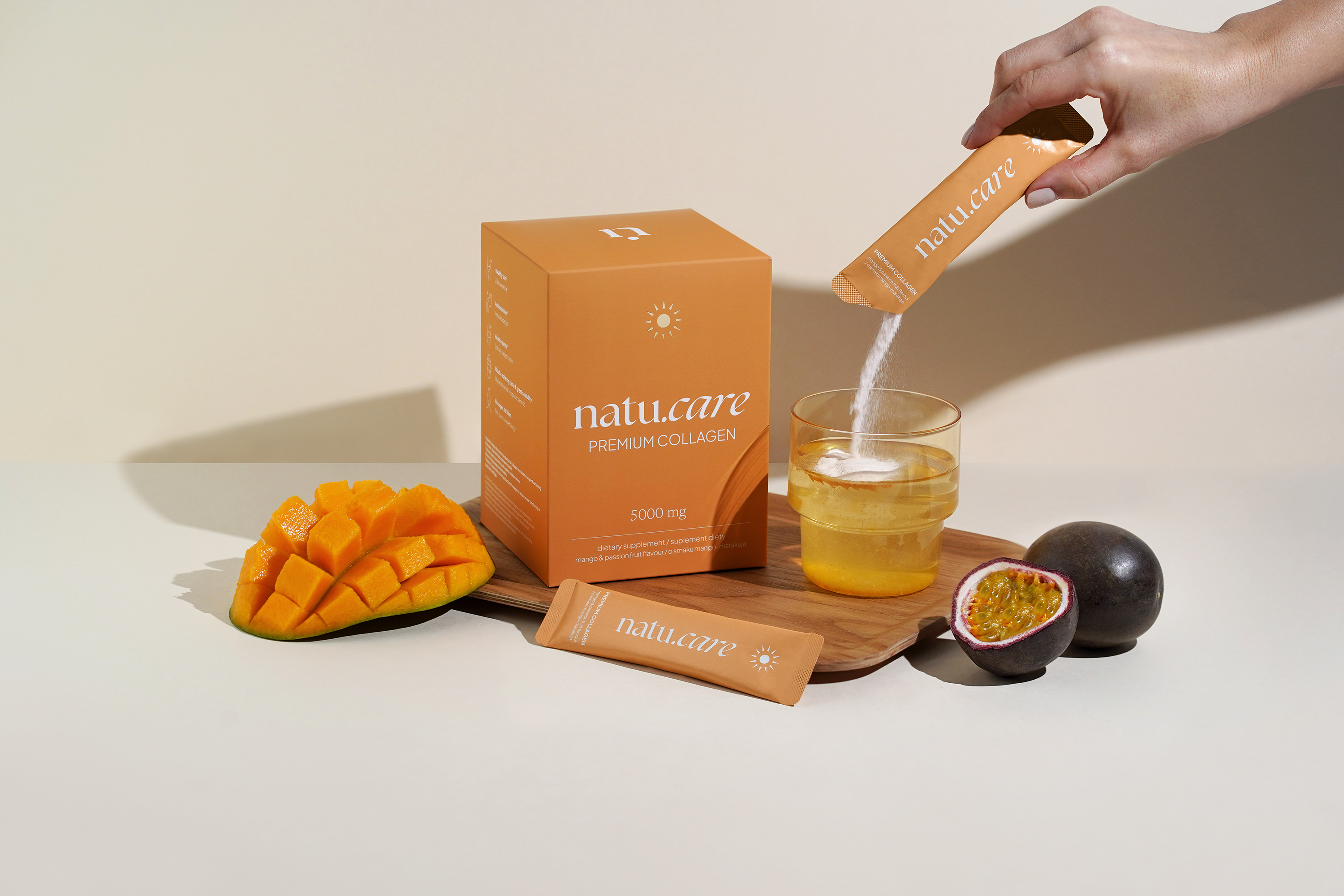
Sprawdź, za co pokochały go tysiące klientek Kolagen Premium (5000 mg) mango-marakuja -15% z kodem BLOG15
Natu.Care Kolagen Premium 5000 mg, mango-marakuja
Natu.Care Kolagen Premium dla zdrowia stawów, skóry, paznokci i włosów. Najlepsza przyswajalność. Optymalna dawka 5 000 lub 10 000 mg. Przebadany przez niezależne laboratorium.
Zobacz więcej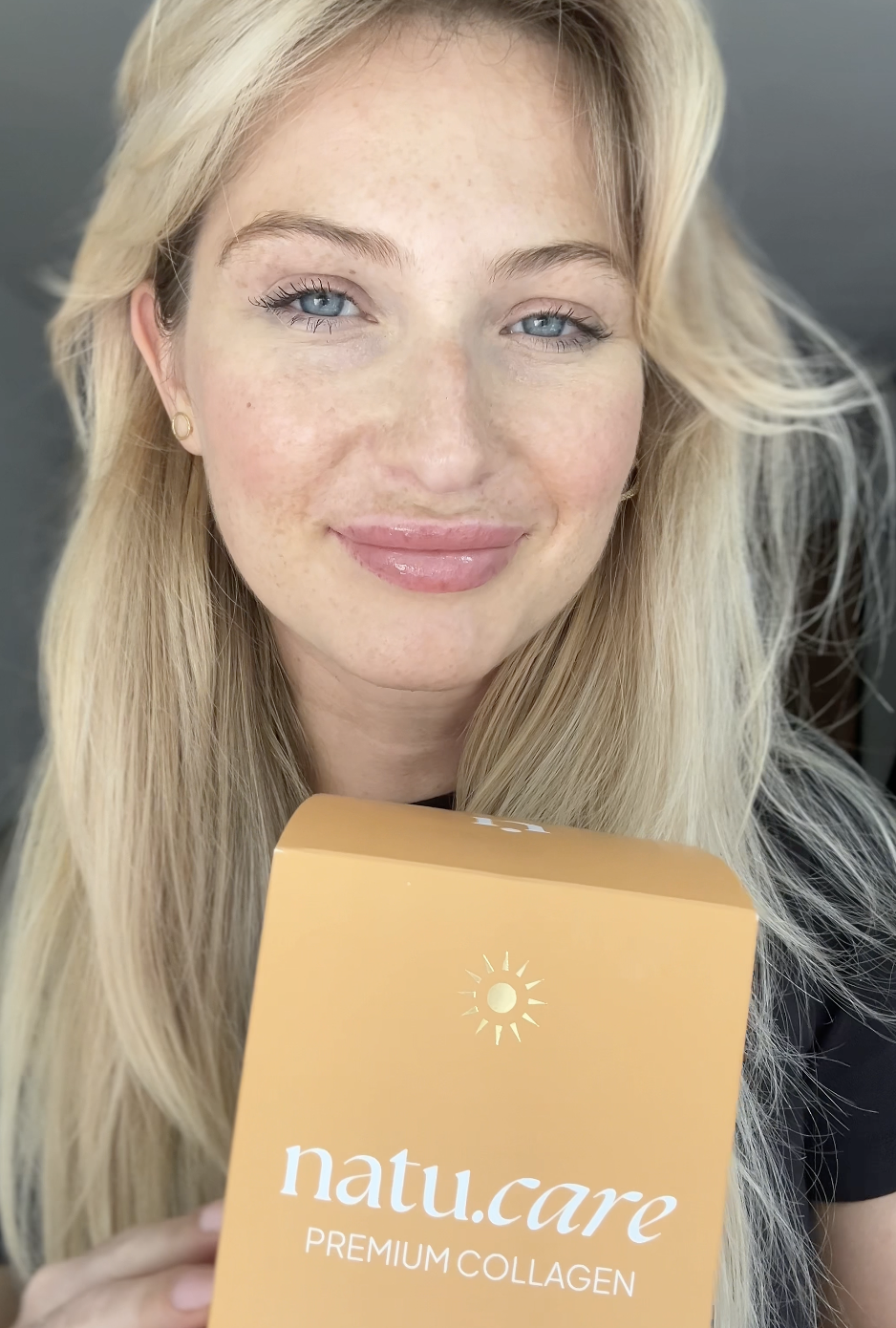
Wybrałam kolagen Natu.Care, ponieważ miał super opinie – a to było dla mnie bardzo ważne! Odkąd go stosuję, moja skóra znacznie się poprawiła i jest nawilżona, a na głowie pojawiły się nowe "baby hair".@Kasia S.
See also:
Summary
- .
- Gelatin for joints is one of the home remedies to support the health of the musculoskeletal system.
- Drinking dietary gelatine and its beneficial effects on joints is not supported by sound scientific research. .
- To strengthen your joints and improve their condition, consider fish collagen supplementation, such as Natu.Care Collagen Premium 5000 mg. .
- If you suffer from joint pain, go to your doctor and physiotherapist - no supplement or gelatine will reverse arthritis or reduce pain when your condition is severe. .
FAQ
.What is the best collagen for joints?
.The best collagen for joints is hydrolysed collagen in the form peptides. This means that it assimilates well and replenishes collagen deficiency. Recommended collagen for joints is Natu.Care Collagen Premium mango-maracuja with 5,000 or 10,000 mg of collagen. It helps maintain a healthy musculoskeletal system.
How to rebuild the collagen in your joints.
To rebuild collagen in joints and improve their function, consider supplementation with type 1 collagen. Structurally, it resembles collagen produced naturally in the human body and thus has a high bioavailability. Regular drinking of collagen can support the health of the musculoskeletal system through its supplementation in joint cartilage.
Collagen can be supplemented by eating chicken feet, offal (liver), gelatine-based jellies, broth on beef or pork bones or brawn, but these foods do not contain such high amounts collagen as a dietary supplement and are not as well absorbed.
Magister of Pharmacy adds: it is worth starting collagen supplementation at the first signs of joint problems, and even prophylactic use from 25 years of age, which will translate into faster effects on the musculoskeletal system and prevent the first wrinkles.
How to increase synovial production
.To increase synovial production, it is worth taking care of proper hydration (about 90% of synovial fluid is water), the supply of collagen (from supplements diet) and physical activity properly matched to the possibilities. Joints are worth taking care of as early as around 25 years of age, when the body's natural production of collagen is declining, but it will also be helpful after 30, as well as after 50 years of age.
Are jelly and gelatine the same thing?
.No, jelly and gelatine are not the same thing. Jelly is a food in gel form that is made by combining dissolved gelatine with water or juice and the addition of other ingredients. Gelatine is an animal protein and a stand-alone ingredient that is used to gel and form jelly.
What is better for joints collagen or gelatine?
.Collagen in dietary supplement form is superior to gelatin in supporting joint health because it has higher bioavailability and usually contains more collagen. Hydrolysed fish collagen type 1 is particularly recommended because it structurally resembles collagen produced by the human body.
Is gelatine keto?
.Yes, gelatin is good on the keto and low-carb diet, as it contains almost no carbohydrates and has up to 85% protein per 100g. Gelatin will work well as an addition to keto meals or keto-snacks, will increase the proportion of protein in a diet and will help increase satiety after a meal.
Are Haribo jellybeans good for joints?
.No, Haribo jelly beans are not good for joints. The jelly beans will not provide large amounts of collagen and it is worth noting that they contain artificial colours, are high in calories (around 350 kcal per 100g) and provide up to 70g of sugars per 100g.
Can the vegan equivalents of gelatine - agar, pectin or carrageenan provide collagen?
.No, they will not provide collagen as they are quite separate compounds. Gelatin is protein, rich in peptides and amino acids, among other building functions, while agar, carrageenan and pectin, are compounds in the nature of polysaccharides, or complex carbohydrates.
These are compounds from a quite different chemical group. Vegan equivalents of gelatine will not provide collagen.
What is gelatine in?
.Gelatin can be found in products such as jelly (fruit, vegetable, classic), jellies, gelatine-based desserts (e.g. cold cheesecakes). Gelatine content may vary depending on the source, manufacturer and specific product.
How to use gelatine for your joints
.Gelatin for joints can be used by mixing 3 teaspoons of food-grade gelatin powder with 100 ml of water. Set the liquid aside overnight or for about 8 hours and drink it on an empty stomach. To improve the taste of the drink, you can add honey, lemon juice or maple syrup.
Remember that gelatine can interfere with the absorption of medicines and dietary supplements, so keep a minimum 2-hour interval.
- .
Sources
.See all
.Bello, A. E., & Oesser, S. (2006). Collagen hydrolysate for the treatment of osteoarthritis and other joint disorders:a review of the literature. Current Medical Research and Opinion, 22(11), 2221-2232. https://doi.org/10.1185/030079906X148373
Eastoe, J. E. (1955). The amino acid composition of mammalian collagen and gelatin. Biochemical Journal, 61(4), 589-600.
Elyasi, H., Rahimi, H., & Sepahvend, A. (2020). Gelatin, halal or haram? Gelatin, halal or haram? Plant Biotechnology Persa, 2(1), 35-41. https://doi.org/10.29252/pbp.2.1.35
Frontiers | Fish scale rich in functional compounds and peptides: A potential nutraceutical to overcome undernutrition. (n.d.). Retrieved 23 October 2023, from https://www.frontiersin.org/articles/10.3389/fnut.2022.1072370/full
Gelatin: Health Benefits, Side Effects, Uses, Dose & Precautions. (n.d.). RxList. Retrieved 23 October 2023, from https://www.rxlist.com/gelatin/supplements.htm
Handke, N. A., Koch, D. C., Muschler, E., Thomas, D., Luetkens, J. A., Attenberger, U. I., Kuetting, D., Pieper, C. C., & Wilhelm, K. (2021). Bleeding management in computed tomography-guided liver biopsies by biopsy tract plugging with gelatin sponge slurry. Scientific Reports, 11(1), Article 1. https://doi.org/10.1038/s41598-021-04155-1
Kjær, M. (2004). Role of Extracellular Matrix in Adaptation of Tendon and Skeletal Muscle to Mechanical Loading. Physiological Reviews, 84(2), 649-698. https://doi.org/10.1152/physrev.00031.2003
Moskowitz, R. W. (2000). Role of collagen hydrolysate in bone and joint disease. Seminars in Arthritis and Rheumatism, 30(2), 87-99. https://doi.org/10.1053/sarh.2000.9622
Shaw, G., Lee-Barthel, A., Ross, M. L., Wang, B., & Baar, K. (2017). Vitamin C-enriched gelatin supplementation before intermittent activity augments collagen synthesis12. The American Journal of Clinical Nutrition, 105(1), 136-143. https://doi.org/10.3945/ajcn.116.138594
Van Vijven, J. P. J., Luijsterburg, P. a. J., Verhagen, A. P., van Osch, G. J. V. M., Kloppenburg, M., & Bierma-Zeinstra, S. M. A. (2012). Symptomatic and chondroprotective treatment with collagen derivatives in osteoarthritis: A systematic review. Osteoarthritis and Cartilage, 20(8), 809-821. https://doi.org/10.1016/j.joca.2012.04.008
Zdzieblik, D., Oesser, S., Gollhofer, A., & König, D. (2017). Improvement of activity-related knee joint discomfort following supplementation of specific collagen peptides. Applied Physiology, Nutrition, and Metabolism, 42(6), 588-595. https://doi.org/10.1139/apnm-2016-0390
- .
Editorials
Meet the team

Ilona Krzak obtained her Master of Pharmacy degree from the Medical University of Wrocław. She did her internship in a hospital pharmacy and in the pharmaceutical industry. She is currently working in the profession and also runs an educational profile on Instagram: @pani_z_apteki

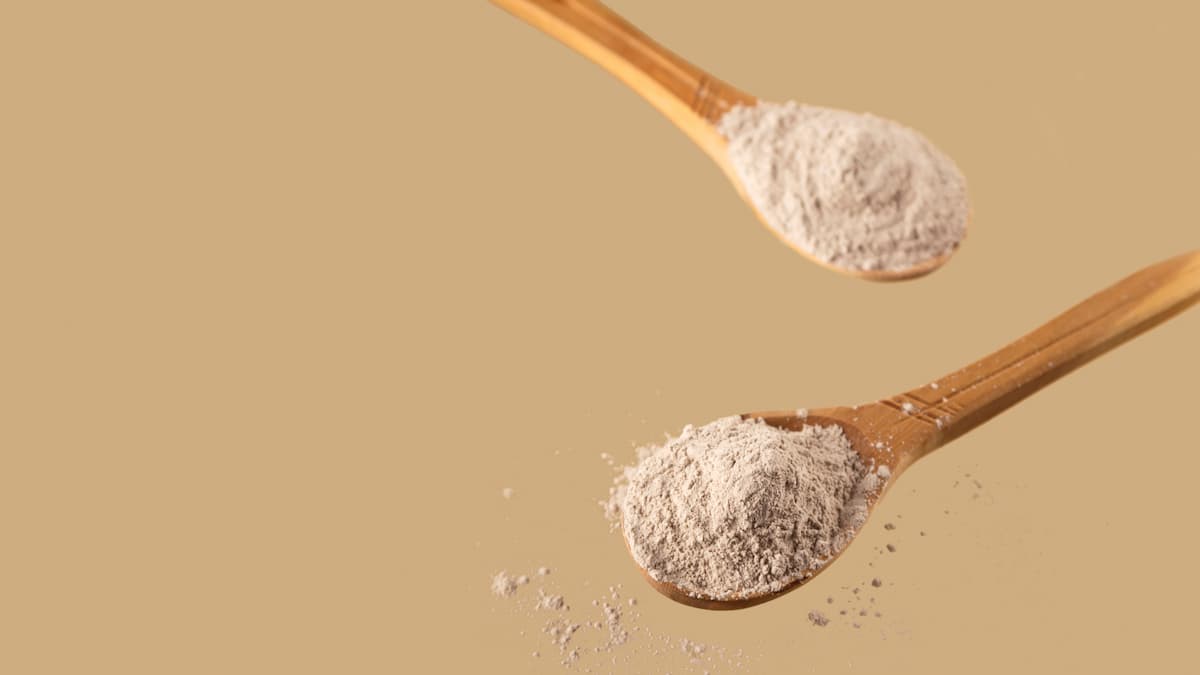
Everything you want to know about COLLinstant collagen.

Collibre collagen is an interesting supplement in shot form.
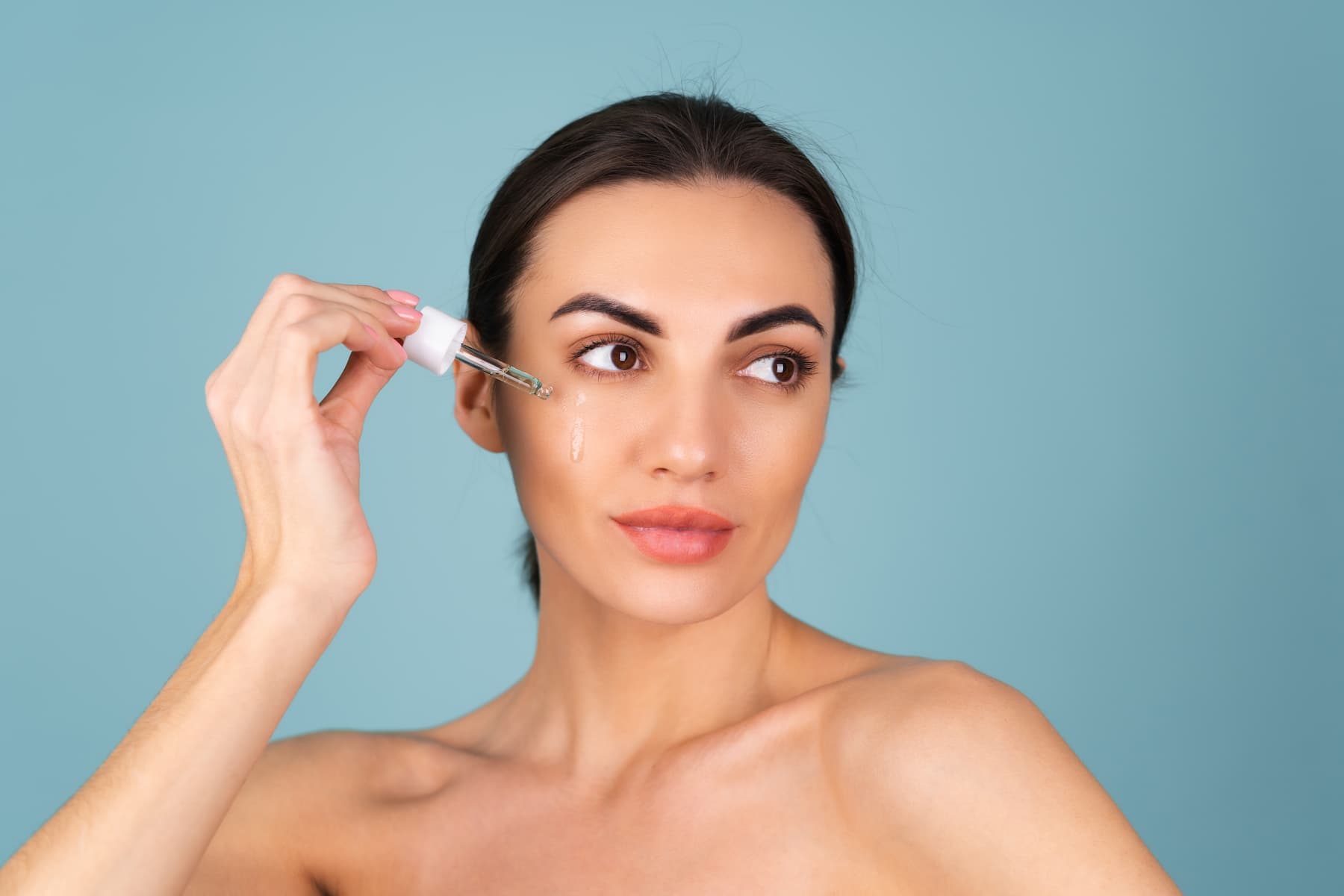
Solgar collagen with hyaluronic acid is a dietary supplement that supports skin and joint health.
